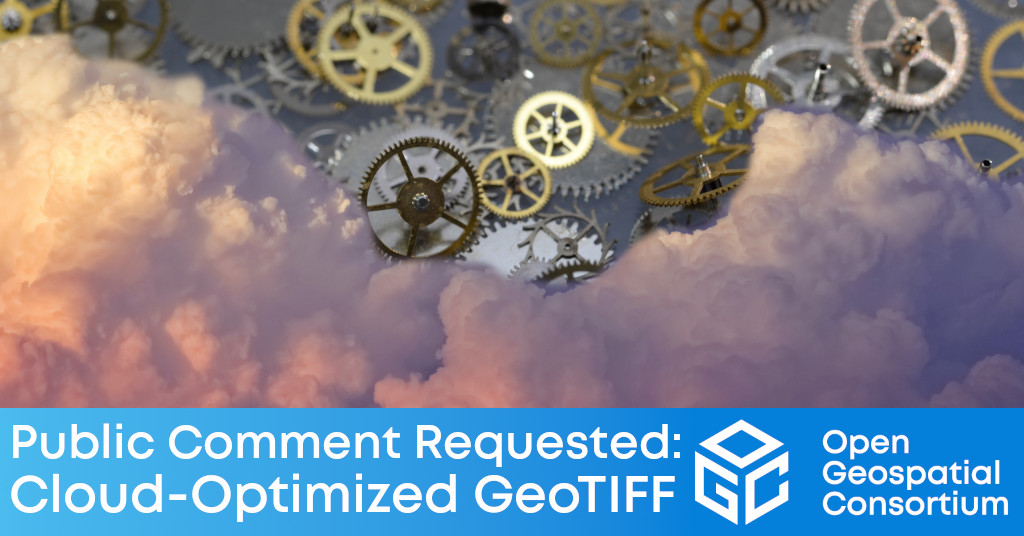COG files enable the extraction of convenient parts of the data at the needed resolution for efficient visualization or analysis purposes over the web.

The Open Geospatial Consortium (OGC) is seeking public comment on the Cloud Optimized GeoTIFF (COG) Candidate Standard, which aims to formalize, as an OGC Standard, existing practices already implemented by the community, such as the GDAL library or the COG explorer and other implementations. Comments are due by 17 September, 2022.
COG allows for efficient streaming and partial downloading of imagery and grid coverage data on the web and enables fast data visualization and geospatial processing workflows. COG-aware applications can efficiently stream/download only the parts of the information they need to visualize or process web-based data. With so much remote sensing imagery available in cloud storage facilities, the benefits of optimizing their visualization and processing will be widespread. COG is one of the preferred formats used in STAC catalogs, and sits alongside other emerging cloud-optimized formats of relevance to OGC, such as Zarr, COPC, and GeoParquet.
The candidate COG Standard specifies how TIFF files can be organized in a way that favors the extraction of convenient parts of the data at the needed resolution while remaining compatible with tradicional TIFF readers. It also specifies how to use HTTP (or HTTPS) to communicate only the part of information needed without downloading the complete file.
This candidate Standard depends on the TIFF specification and the OGC GeoTIFF Standard. For large files, it depends on the BigTIFF specification. The standard takes advantage of some existing characteristics of the TIFF specification and the existing HTTP Range Request specification (IETF RFC 7233) and does not modify them in any way.
OGC Members interested in staying up to date on the progress of this standard, or contributing to its development, are encouraged to join the GeoTIFF Standards Working Group (SWG) via the OGC Portal.
The candidate Cloud Optimized GeoTIFF (COG) Standard is available for review and comment on the OGC Portal. Comments are due by 17 September, 2022, and should be submitted via the method outlined on the candidate Cloud Optimized GeoTIFF (COG) Standard's public comment request page or by submitting an issue to the OGC COG GitHub public repository.
About OGC
The Open Geospatial Consortium (OGC) is a collective problem-solving community of more than 550 experts representing industry, government, research and academia, collaborating to make geospatial (location) information and services FAIR – Findable, Accessible, Interoperable, and Reusable.
The global OGC Community engages in a mix of activities related to location-based technologies: developing consensus-based open standards and best-practices; collaborating on problem solving in agile innovation initiatives; participating in member meetings, events, and workshops; and more.
OGC's unique standards development process moves at the pace of innovation, with constant input from technology forecasting, practical prototyping, real-world testing, and community engagement.
OGC bridges disparate sectors, domains, and technology trends, and encourages the cross-pollination of ideas between different communities of practice to improve decision-making at all levels. OGC is committed to creating an inclusive and sustainable future.
Visit ogc.org for more info on our work.
“
